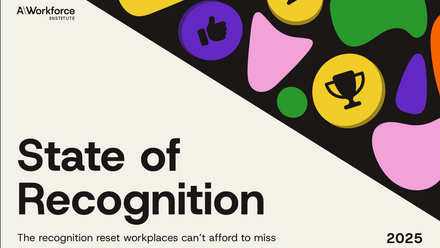Professor Chris Rowley – What are the links between financial wellbeing and employee engagement

Employee engagement is commonly defined by companies and consultants as an outcome, something ‘given’ by employees3 and, according to academics4, has three facets: psychological, behavioural and trait.
Practitioner and consultant interest, comment and research in financial wellness has increased because of perceived costs to organisations and individuals when it is ‘poor’ and benefits when it is ‘good’ – such as productivity, stress, sick days, motivation. Interest in employee engagement from the same groups and academics has been longer-term.
Causation
These two concepts are now linked, with some commentators5 assuming a correlation. Financial wellbeing programmes can improve employee engagement by using technology, together with good communications across multiple platforms and channels.
Yet the causality of financial wellbeing in generating employee engagement is important. A report by Workvine6 compiled a list of the top five drivers of employee engagement: positive motivation; room to innovate; employee wellbeing (related to health); communication and relationships with management; development and control.
These may be easier to directly tackle and address than financial wellbeing.
Blurred definitions
Financial wellbeing and employee engagement are separate and distinct and have been defined in numerous different, often inconsistent ways by various groups – managers, employees, consultants, policymakers and academics. The labels and terms have become ambiguous, blurred and elastic.
Part of this issue concerns distinctiveness from older concepts. For example, how is financial wellbeing different from ‘flexible benefits’? They share both the same aims (to be broad, comprehensive and holistic) and issues (reward trade-offs, with employees desiring short-term gratification over long-term rewards such as pensions, leaving shortages in retirement provision).
Similarly, how is employee engagement different from job enrichment, job commitment, employee involvement or the psychological contract?
So, a part of financial wellness and employee engagement is how their policies and practices are constructed, presented and ‘sold’ to employees. This requires effective leadership, grounded in the awareness of the ‘3Cs’ – context, culture, competence7.
Ethics
However, to what extent is financial wellbeing something that ‘good’ or ‘caring’ organisations should be involved in and offer, as part of wider ideas such as good corporate social responsibility and ethical management8?
Much comment on financial wellbeing is about the provision of benefits such as financial education. From one viewpoint such interventions can be seen as intrusive and even patronising. Furthermore, how do organisations make sure they only offer ‘impartial education’, when does this blur into ‘advice’ and how ‘responsible’ or even ‘liable’ are they for this and any subsequent employee actions and decisions? Does this create ‘moral hazard’ in employees?
Cultural differences
Is financial wellbeing seen in an ethnocentric perspective – how would organisational concern be perceived by managers and employees in businesses with diverse workforces and in different parts of the world?
For example, in parts of Asia with Confucianist and paternalistic cultures of treating employees in a family-like manner, the corporate cultures engendered traditionally involve employee financial wellbeing via lifetime employment and seniority-based pay.
Motivations
What might be driving the interest in financial wellbeing and employee engagement? Is it about organisations becoming more ‘caring’ about employees or a reaction to changes in the operating context?
There are four socio-economic making financial wellbeing and the search for employee engagement more pertinent:
- Shifts to part-time working, increasing precarious types of employment and increased demands in many white collar occupations given the high porosity of labour. These include the weakening of the career system and the rise of zero hours contracts and the ‘gig’ economy.
- Reduced or weakened pension schemes in a variety of sectors.
- Needless and mendacious complexity in financial products with deliberate obfuscation – not new but long-term trends in the sector. A macro example is the cause of the 2008 financial crisis and micro examples are not only payment protection insurance (PPI) and endowment mortgages, but now Tata’s Port Talbot steel workers being targeted by unscrupulous financial advisors.
- Changes in consumer behaviour, aided and abetted by marketing, towards instant gratification, enabling superficial consumer markets and needless built-in obsolescence of products. Another example is financially engineered car deals (now accounting for over 80% of new car sales in the UK, worth nearly £32 billion in 2016) whereby the first car for many young drivers is a brand new one on the ticking timebomb of a Personal Contract Purchase (PCP) – which, lest we forget, are chimeras of financial probity as they are simply sub-prime loans in another form.
Financial wellbeing and employee engagement are difficult to define in hard terms and boundaries are not necessarily new. Causality is a moot point and requires more sophisticated analysis and research attention. Engagement may be easier to address by tackling those more traditional employee relations areas of employee respect, recognition and relative autonomy and good management.
A more nuanced and calibrated view to these concepts is useful, recognising that a unitarist perspective is not the only one with the prevalence of pluralist perspectives as well as international diversity and differences.
This article is written by Professor Chris Rowley, Professor Emeritus, Human Resource Management, Cass Business School, City, University of London and Visiting Fellow, Kellogg College, University of Oxford

References
1. Barclays (2014) Financial Well-being: The last taboo of the workplace
2. Cooper, T. (2018) ‘Financial Wellbeing” Engaging Employees to Target Retirement Poverty’, Raconteur, 28 February
3. Roberston-Smith, G and Marwick, C. (2009) ‘Employee Engagement: A Review of Current Thinking’, Report 469, Institute of Employment Studies
4. Macey, W. and Schneider, B. (2008) ‘The Meaning of Employee Engagement’, Industrial and Organizational Psychology, 1,1, 3-30
5. Willis Towers Watson (2017) Global Benefits Attitude Survey
6. Clarke, R. (2018) ‘Employee engagement – is there still room for improvement?’, HR Review, 27 February
7. Rowley, C. and Ulrich, D. (eds) Leadership in the Asia Pacific: A Global Research Perspective, Routledge, 2014
8. Rowley, C. and Oh, I. (eds) Business Ethics in Asia: Examples in Historical Context, Routledge, 2017






